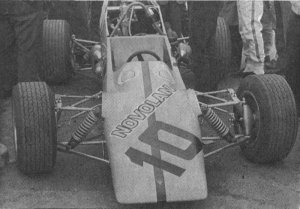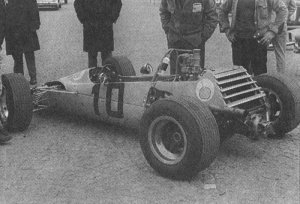Bellasi
Giuglielmo Bellasi produced a number of F3 cars from 1966 to 1969, they never achieved any great success but were one of the large number of small Italian companies that helped boost the grids in the early years of F3.
Bellasi’s greatest claim to fame was in 1970 when Swiss F1 privateer Silvio Moser commissioned them to build him a Grand Prix car. The change in F1 regulations at that time required bag tanks which meant a monocoque so Bellasi made a tub to receive the Ford DFV engine, Hewland gearbox and much of the suspension from Moser’s spaceframe Brabham BT24. The car managed to qualify at the back of a couple of Grand Prix before Moser gave in.
1966
The first Bellasi, as was common in Italy at the time, was based on a contemporary Brabham chassis, driven by Giuglielmo Bellasi himself the only result of note was a 3rd place at Lago de Garda in May.
1967
Bellasi switched to a monocoque design for their 1967 car, Giuglielmo Bellasi was still the driver, a fifth at Monza in June was his best finish.
1968
There are no details as to what car was used in 1968, there were no top six results recorded in any race of note.
1969
A new car was introduced for 1969, it featured a fashionable wedge shape (in fact it was nicknamed “Cuneo” meaning a wedge). The rather spindly suspension was outboard with a very unusual looking top wishbone and anti rollbar. The radiator really was rear mounted, it was sited above the gearbox which presumably gave a very heavy rearward weight bias. Once again no results were achieved despite being driven by the experienced Giorgio Pianta and this seems to have been the last F3 Bellasi produced.

